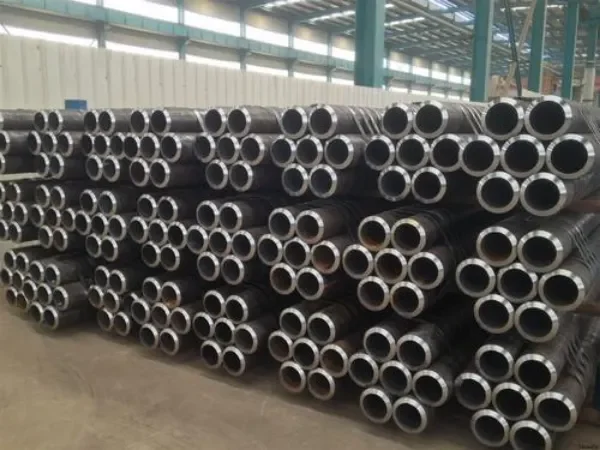Cleaning and repair of seamless pipes
CS seamless pipe refers to a round, square, rectangular steel with a hollow section and no joints around it. CS seamless pipes are made of steel ingots or solid pipe blanks through perforation into capillary pipes, which are then hot-rolled, cold-rolled or cold-drawn. Compared with solid steel such as round steel, the cs seamless pipe has a hollow section and is widely used as a pipeline for conveying fluid. Compared with solid steel such as round steel, the weight is lighter when the bending and torsional strength is the same. It is an economical section steel and is widely used in the manufacture of structures parts and mechanical parts, such as oil drill pipes, automobile transmission shafts, bicycle frames, and steel scaffolding used in construction.

Cleaning of cs seamless pipes
1) Cleaning
Use solvents and emulsions to clean the steel surface to remove oil, grease, dust, lubricants and similar organic substances, but it cannot remove rust, oxide scale, welding flux, etc. on the surface of the steel pipe, so it is only an auxiliary method in the anti-corrosion production of steel pipes.
2) Tool rust removal
Mainly use tools such as wire brushes to grind the surface of steel, which can remove loose or raised oxide scale, rust, welding slag, etc. The rust removal of hand tools can reach Sa2 level, and the rust removal of power tools can reach Sa3 level. If the steel surface is adhered to a firm scale of iron oxide, the rust removal effect of the tool is not ideal, and the anchor pattern depth required for anti-corrosion construction cannot be achieved.
3) Pickling
Generally, two methods of chemical and electrolysis are used for pickling treatment. Pipeline anti-corrosion only adopts chemical pickling, which can remove oxide scale, rust, and old coating. Sometimes it can be used as reprocessing after sandblasting and rust removal. Although chemical cleaning can make the surface achieve a certain degree of cleanliness and roughness, its anchor pattern is shallow and it is easy to cause pollution to the environment.
4) Spray (throwing) rust removal
Spraying (throwing) rust removal is to drive the spraying (throwing) blades to rotate at high speed through a high-power motor, so that abrasives such as steel sand, steel shot, iron wire segments, minerals, etc. are sprayed (throwing) on the surface of the steel pipe under the action of centrifugal force. , not only can completely remove rust, oxides and dirt, but also the steel pipe can achieve the required uniform roughness under the action of abrasive impact and friction; after spraying (throwing) rust removal, it can not only expand the surface of the pipe physical adsorption, and can enhance the mechanical adhesion between the anti-corrosion layer and the surface of the pipe. Therefore, spraying (throwing) rust removal is an ideal rust removal method for pipeline anticorrosion. Generally speaking, shot blasting (sand) derusting is mainly used for inner surface treatment of pipes, and shot blasting (sand) derusting is mainly used for outer surface treatment of pipes. Several problems should be paid attention to when using spray (throwing) rust removal.
Repair of cs seamless pipes
1) The welding process and welding parameters used in the repair must be carried out in combination with relevant welding examples;
2) The welder who repairs the stainless steel seamless pipe must have a certificate of conformity for the response project; and it is held by a person with excellent welding quality, and it is enough to repair it once;
3) Use non-destructive testing technology to find all cracks and determine the exact location;
4) Select the filling material that meets the process example, that is, the welding rod, and apply it after drying according to the regulations;
5) The welding conditions for crack repair of stainless steel seamless pipes must meet the welding requirements, such as temperature, rainfall, wind speed, etc.






